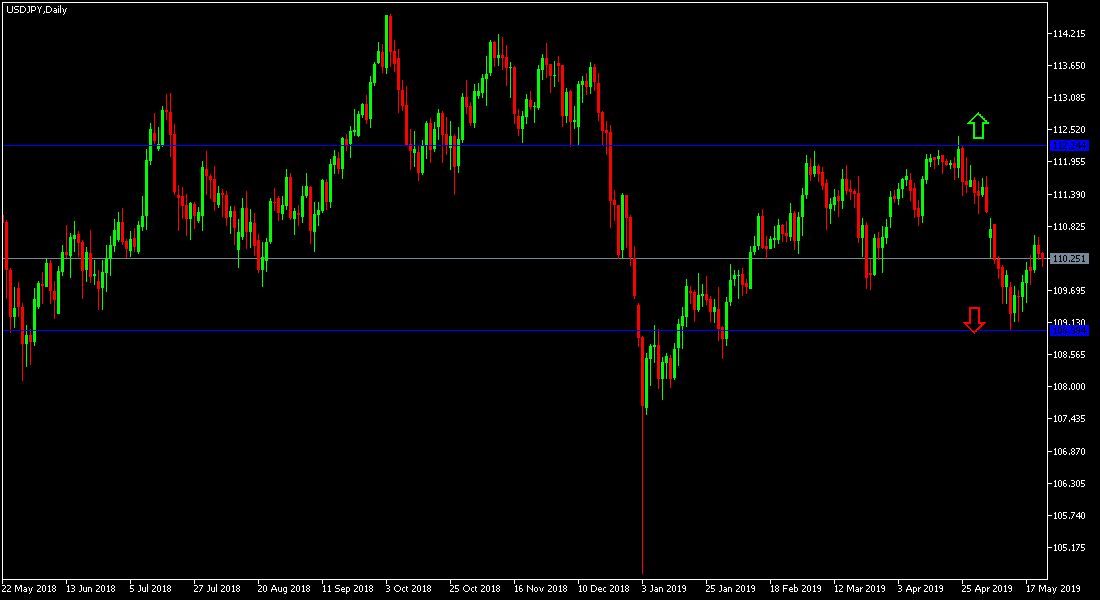Despite the contents of the latest US Federal Reserve meeting showed the desire of some members of the Bank's policy committee to raise interest rates, which is positive to the dollar. However the USD/JPY fell to 110.12 at the time of writing as the Japanese yen gains strengthened as a safe haven amid growing investor fears of expanding the US-China trade war, especially after US sanctions on Chinese giant Huawei. The pair's recent gains did not exceed the resistance level of 110.66 and until now the dollar and Japanese yen have been the most prominent safe haven assists in the recent period amid global trade tensions. Japan's economic growth, contrary to expectations, remained strong in the first quarter of 2019 and expectations were for a strong slowdown.
China responded to the United States by imposing new tariffs of $60 billion of US products after Trump carried out its threat and imposed more tariffs on the $ 200 billion worth of Chinese products despite the continued optimism that the agreement between the two sides would be close to end that trade war. Which threaten the world economy.
The US economy managed to add new jobs more than expected, the unemployment rate fell to its lowest level in 49 years and the average hourly wage rose.
The Federal Reserve Board kept the interest rate unchanged as expected, pointing out that it is unlikely to raise or lower interest rates in the coming months amid signs of renewed economic health while at the same time inflation is still unusually low.
We noted in the previous technical analysis that the daily chart clearly shows a new bullish consolidation zone for the pair and that this performance foreshadows the pair's upcoming move towards further gains or bearish correction with the profit-taking operations.
Technically: As we had previously predicted that the stability of the USD / JPY below 110.00 will increase the bearish momentum of the pair and the next support levels may be 109.30, 108.70 and 107.80 respectively, which confirm the strength of the bearish trend. On the upside, the nearest resistance levels are currently at 110.75, 111.40 and 112.75, respectively. We still prefer to buy the pair from every bearish bounce.
On the economic data today: the economic agenda will focus on US data including unemployed claims and new home sales. The pair will watch with caution and interest any renewed global geopolitical concerns.


